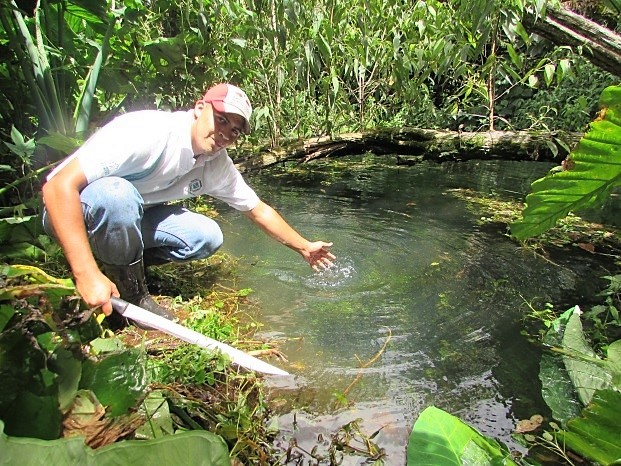Community implementation of adaptation measures in forests and agroforestry systems
The EbA measures implemented in the sub-basin focused on water and soil ecosystem services, on productive diversification and on mitigating the impacts of climate change on crops and community assets. Together with >100 producers from the upper part of the sub-basin, fruit and timber trees were introduced into agroforestry systems bordering 7 water sources, and organic agriculture was encouraged, allowing families to diversify their income and reduce the vulnerability of their crops, productive infrastructure and housing, which are affected by strong winds. This, in combination with soil and water conservation practices (hillside irrigation ditches, non-burning and crop residue incorporation), has helped to reduce soil erosion caused by extreme rainfall, as well as improved moisture retention in crops, soil fertility, and water infiltration and capture in the area. The EbA measures not only generate more resilient agro-ecosystems, but also increase the availability of water, which benefits >400 families in the sub-basin. These actions have raised awareness of the need for ecosystem and adaptive approaches to territorial management in the face of climate change.
